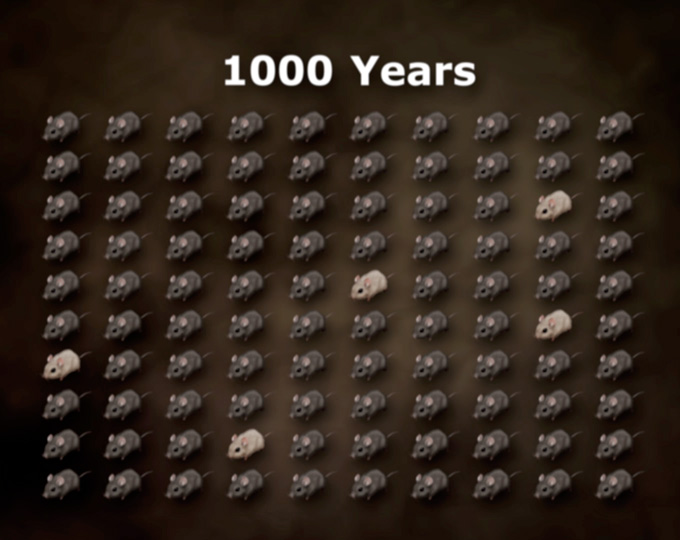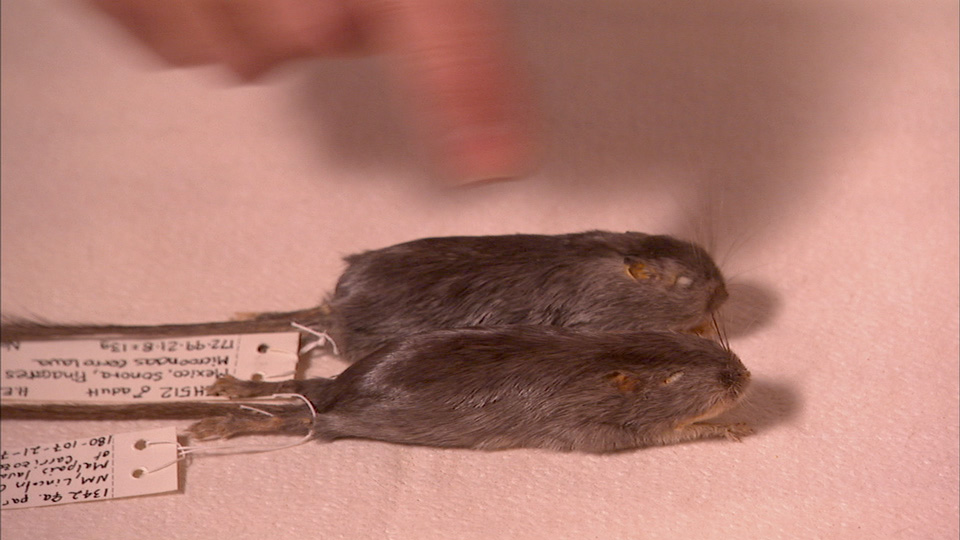Natural Selection and Adaptation: Quiz Results
1. Why did dark-colored rock pocket mice first appear in a population of light-colored rock pocket mice?
- They have a genetic mutation that affects their fur color.
- There is dark lava rock in the area where they live.
- Individuals change color to blend in with the environment.
- Predators eat light-colored rock pocket mice.
Answers chosen:
Attempts:
2. Why do dark-colored rock pocket mice on dark lava flows have white bellies?
- There is no selection for dark bellies by visual predators.
- Mutations causing dark bellies do not occur.
- There is a reproductive advantage to having a dark belly.
- White bellies are an important part of camouflage.
Answers chosen:
Attempts:
3. Mutations are always...
- good.
- bad.
- neutral.
- a change in an organism's DNA.
Answers chosen:
Attempts:

4. When dark-colored fur gives mice a 1% competitive advantage and 1% of the population begins with dark fur, in about 1,000 years, 95% of the population will have dark fur. Which of the following statements is true?
- Dark-colored rock pocket mice, in this population, have fewer offspring than light-colored rock pocket mice.
- If dark-colored rock pocket mice had a competitive advantage of 0.1%, it would take more than 1,000 years for 95% of the population to have dark fur.
- If dark-colored mice had a competitive advantage of 5%, it would take more than 1,000 years for 95% of the population to have black fur.
- If dark-colored mice had a competitive advantage of 10%, it would take more than 1,000 years for 95% of the population to have black fur.
Answers chosen:
Attempts:
5. What does Dr. Carroll mean when he says "while mutation is random, natural selection is not"? (Note: More than one answer is correct.)
- Mutations are caused by changes in the environment.
- Natural selection can favor some mutations and not others.
- Selection can change depending on the environment.
- Mutations for advantageous traits are more likely to be passed on to the next generation.
Answers chosen:
Attempts:

6. In the lab, Nachman examined dark-colored mice from two different populations living hundreds of miles apart. The mice looked nearly identical. Their dark color was caused by two different genes. What does this tell you? (Note: More than one answer is correct.)
- Dark-colored fur evolved only once in rock pocket mice.
- There are at least two genes involved in creating dark-colored mouse fur.
- Dark fur color evolved independently on each lava flow.
- Different mutations in two different genes cannot generate the same phenotype.
- Under similar conditions, natural selection can favor similar adaptations.
Answers chosen:
Attempts: